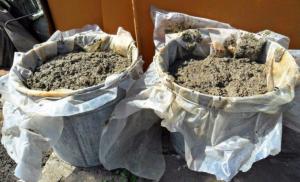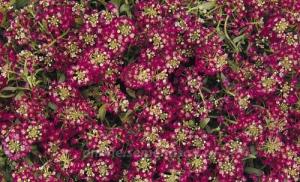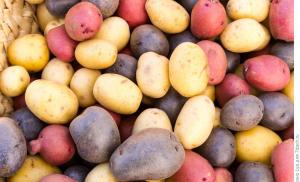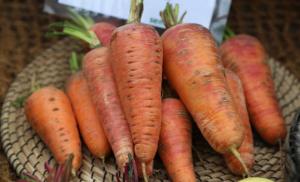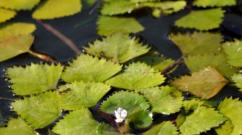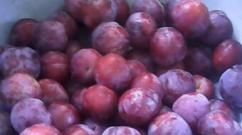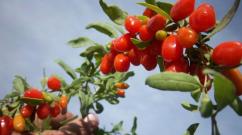What plankton eats. Plankton species
The smallest organisms of the water column are combined into the concept of "plankton" (from the Greek " planktos"- soaring, wandering). The plankton world is vast and diverse. This includes organisms that inhabit the thickness of the seas, oceans, lakes and rivers. They live wherever there is the slightest amount of water. It can even be the most common puddles, a vase of flowers with stagnant water, fountains, etc.
The plankton community is the most ancient and important from many points of view. Plankton has existed for about 2 billion years. They were the first organisms that once inhabited our planet. Plankton organisms were the first to supply our planet with oxygen. And now about 40% of oxygen is produced by aquatic plants, primarily plankton. Plankton plays an important role in the nutritional balance of aquatic ecosystems, as it feeds on many species of fish, whales and some birds. It is the main source of life for the seas and oceans, large lakes and rivers. The impact of plankton on water resources is so great that it can even affect the chemical composition of waters.
Plankton includes phytoplankton, bacterioplankton, and zooplankton. These are mainly small organisms, the size of which usually does not exceed tens of micrometers for algae and several centimeters for zooplankton. However, most of the animals are much smaller. For example, the largest freshwater daphnia is only 5 mm in size.
However, most people know very little about plankton, although the number of organisms in water bodies is extremely large. For example, the number of bacteria in one cubic centimeter of water reaches 5-10 million cells, algae - in the same volume - tens to hundreds of thousands, and zooplankton organisms - hundreds of specimens. It is an almost invisible world. This is due to the fact that most plankton organisms are very small in size, and in order to see them, a microscope with a sufficiently high magnification is needed. Organisms that make up plankton are in the water column in a state of soaring. They cannot resist being carried by their currents. However, this can only be discussed in general terms, since in calm water many planktonic organisms can move (albeit slowly) in a certain direction. Algae, changing their buoyancy, move vertically within a few meters. During the day, they are in the upper, well-lit water layer, and at night they sink three to four meters deeper, where there are more minerals. Zooplankton in the seas and oceans at night rises to the upper layers, where it filters out microscopic algae, and in the morning it sinks to a depth of 300 meters or more.
Who is part of the plankton? Most of the planktonic organisms spend their entire life in the water column and are not associated with a solid substrate. Although the resting stages of many of them settle to the bottom of the reservoir in winter, where they wait out unfavorable conditions. At the same time, there are those among them who spend only part of their life in the water column. This is meroplankton (from the Greek. " meros» - part). It turns out that the larvae of many benthic organisms - sea urchins, stars, ophiur, worms, molluscs, crabs, corals and others lead a planktonic lifestyle, are carried by currents and, ultimately, find places for further habitation, settle to the bottom and already to the end life does not leave him. This is due to the fact that benthic organisms are in a disadvantageous position in comparison with plankton, because move relatively slowly from place to place. Planktonic larvae carry them long distances by currents, just as the seeds of land plants are carried by the wind. The eggs of some fish and their larvae are also planktonic.
As we have already noted, most planktonic organisms are true plankters. They are born in the water column, and there they die. It includes bacteria, microscopic algae, various animals (protozoa, rotifers, crustaceans, molluscs, coelenterates, etc.).
Planktonic organisms have developed adaptations that make it easier for them to soar in the water column. These are all kinds of outgrowths, flattening of the body, gas and fat inclusions, a porous skeleton. In planktonic mollusks, the reduction of the shell took place. They have it, unlike benthic organisms, very thin, and sometimes barely visible. Many planktonic organisms (such as jellyfish) have gelatinous tissues. All this allows them to support the body in the water column without any significant energy expenditure.
Many planktonic crustaceans make vertical migrations. At night, they rise to the surface, where they eat algae, and closer to dawn they sink to a depth of several hundred meters. There, in the darkness, they hide from the fish, which eat them with pleasure. In addition, a low temperature reduces metabolism, and, accordingly, energy expenditures for maintaining life. At great depths, the density of water is higher than at the surface, and organisms are in a state of neutral buoyancy. This allows them to be in the water column at no cost. Phytoplankton mainly inhabit the surface layers of water, where sunlight penetrates. After all, algae, like terrestrial plants, need light for their development. In the seas, they live to a depth of 50-100 m, and in fresh water bodies - up to 10-20 meters, which is associated with the different transparency of these reservoirs.
In the oceans, the depths of algae habitat are the thinnest film of a huge layer of water. However, despite this, microscopic algae are the primary food for all aquatic organisms. As already noted, their size does not exceed several tens of micrometers. Only the size of the colonies reaches hundreds of micrometers. These algae feed on crustaceans. Among them, we are most familiar with krill, which mainly includes euphausiid crayfish up to 1.5 cm in size. The crustaceans are eaten by planktophagous fish, and they, in turn, are larger and predatory fish. Whales feed on krill and filter them out in huge numbers. So, in the stomach of a blue whale 26 m long, 5 million of these crustaceans were found.
Marine phytoplankton plankton is mainly composed of diatoms and pyridines. Diatoms dominate in polar and subpolar sea (ocean) waters. They are so large that the silicon skeletons, after they die off, form bottom sediments. Most of the bottom of the cold seas is covered with diatomaceous silts. They occur at depths of about 4000 m and more and consist mainly of valves of large diatoms. Small shells usually dissolve before reaching the bottom. The mineral diatomite is a product of diatoms. The number of valves in diatoms in some areas of the ocean reaches 100-400 million per 1 gram of silt. Over time, diatomaceous oozes transform into sedimentary rocks, from which "diatomaceous earth" or diatomite mineral is formed. It consists of the smallest porous flint shells and is used as a filter material or sorbent. This mineral is used to make dynamite.
In 1866-1876. Swedish chemist and entrepreneur Alfred Nobel was looking for ways and means of producing a potent explosive. Nitroglycerin is a very effective explosive, but it explodes spontaneously on minor shocks. Having established that to prevent explosions, it is enough to soak diatomaceous earth with liquid nitroglycerin, Nobel created a safe explosive - dynamite. Thus, the enrichment of Nobel and the well-known "Nobel Prizes" established by his will owe their existence to the smallest diatoms.
The warm waters of the tropics are characterized by a higher species diversity in comparison with the phytoplankton of the Arctic seas. Peridinea algae are most diverse here. In marine plankton, calcareous flagellate coccolithophorids and siliceous flagellate silicoflagellates are widespread. Coccolithophorids mainly inhabit tropical waters. Calcareous silts, including the skeletons of coccolithophorids, are widespread in the oceans. Most often they are found in the Atlantic Ocean, where they cover more than 2/3 of the bottom surface. However, in the silts, the shells of foraminifera belonging to zooplankton are present in large quantities.
Visual observations of sea or ocean waters make it easy to determine the distribution of plankton from the color of the water. The blueness and transparency of the waters testifies to the scarcity of life; in such water, there is practically no one to reflect light, except for the water itself. Blue is the color of sea deserts, where floating organisms are very rare. Green is an unmistakable indicator of vegetation. Therefore, when fishermen encounter green water, they know: the surface layers are rich in vegetation, and where there is a lot of algae, animals that feed on them are always abundant. Phytoplankton is rightly called the pasture of the sea. Microscopic algae are the staple food of many ocean dwellers.
The dark green color of the water indicates the presence of a large mass of plankton. Shades of water indicate the presence of certain planktonic organisms. This is very important for fishermen, as the nature of the plankton determines the type of fish found in the area. An experienced fisherman can capture the finest shades of the color of the sea water. Depending on whether he is fishing in "green", "yellow" or "red" water, the "experienced eye" can predict with a reasonable degree of probability the nature and size of the catch.
In fresh water bodies, blue-green, green, diatoms and dinophytic algae prevail. The abundant development of phytoplankton (the so-called "bloom" of water) changes the color and transparency of the water. In fresh water bodies, blue-green blooms are most often observed, and in the seas - peridinia. The toxic substances emitted by them reduce the quality of water, which leads to the poisoning of animals and humans, and in the seas causes massive death of fish and other organisms.
The color of water in certain regions or seas is sometimes so characteristic that the seas got their name from the color of the water. For example, the peculiar color of the Red Sea is caused by the presence of the blue-green alga Trichodesmium ( Trichodesmium egythraeum), which has a pigment that gives the water a reddish-brown tint; or Crimson Sea - the former name of the Gulf of California.
Some plant dinoflagellates (such as Gonyaulax and Gymnodinium) give the water a peculiar color. In tropical and temperate waters, these creatures sometimes multiply so quickly that the sea turns red. Fishermen call this phenomenon "red tide". Huge accumulations of dinoflagellates (up to 6 million cells in 1 liter of water) are extremely poisonous, so many organisms die during the "red tide". These algae are not only poisonous in themselves; they release toxic substances, which then accumulate in organisms that eat dinoflagellates. Any creature, be it a fish, a bird or a person, having eaten such an organism, receives a dangerous poisoning. Fortunately, the red tide phenomenon is local and does not occur frequently.
The waters of the seas are colored not only by the presence of algae, but also by zooplankton. Most euphausiids are transparent and colorless, but some are bright red. These euphausiids live in the colder northern and southern hemispheres and sometimes congregate in such numbers that the entire sea turns red.
The color of the water is given not only by microscopic planktonic algae, but also by various particles of organic and inorganic origin. After heavy rain, the rivers bring in many mineral particles, which is why the water takes on different shades. Thus, clay particles brought by the Yellow River give the Yellow Sea a corresponding hue. The Yellow River (from the whale - Yellow River) got its name due to its turbidity. Many rivers and lakes contain so much humic compounds that their waters turn dark - brown and even black. Hence the names of many of them: Rio Negro - in South America, Black Volta, Niger - in Africa. Many of our rivers and lakes (and the cities located on them) are called "black" because of the color of the water.
In fresh water bodies, coloration of water due to the development of algae appears more often and more intensely. The massive development of algae causes the phenomenon of "blooming" of water bodies. Depending on the composition of phytoplankton, the water is colored in different colors: from green algae Eudorina, Pandorina, Volvox - in green; from diatoms Asterionella, Tabellaria, Fragilaria - yellowish-brown color; from flagellates Dinobryon - greenish, Euglena - green, Synura - brown, Trachelomonas - yellowish brown; from dinophytes Ceratium - in yellow-brown color.
The total biomass of phytoplankton is small compared to the biomass of the zooplankton feeding on it (1.5 billion tons and more than 20 billion tons, respectively). However, due to the rapid multiplication of algae, their production (harvest) in the World Ocean is almost 10 times higher than the total production of the entire living population of the ocean. The development of phytoplankton largely depends on the content of mineral substances in surface waters, such as phosphates, nitrogen compounds and others. Therefore, in the seas, algae develop most abundantly in the regions of the rise of deep waters rich in minerals. In fresh water bodies, the influx of mineral fertilizers washed off from the fields, various household and agricultural wastewaters leads to the massive development of algae, which negatively affects the quality of water. Microscopic algae feed on small planktonic organisms, which in turn serve as food for larger organisms and fish. Therefore, in the areas of the highest phytoplankton development, there are a lot of zooplankton and fish.
The role of bacteria in plankton is great. They mineralize organic compounds (including various pollutants) of water bodies and re-include them in the biotic cycle. The bacteria themselves are food for many zooplankton organisms. The number of planktonic bacteria in seas and clean fresh water bodies does not exceed 1 million cells in one milliliter of water (one cubic centimeter). In most fresh water bodies, their number varies within 3-10 million cells in one milliliter of water.
A.P. Sadchikov,
Professor of Lomonosov Moscow State University, Moscow Society of Naturalists
(http: //www.moip.msu.ru)
DO YOU LIKE THE MATERIAL? SUBSCRIBE OUR EMAIL:
We will send you a digest of the most interesting materials on our site by email.
plankton
Dictionary of Medical Terms
plankton (Greek planktos wandering)
a set of animals and plant organisms that inhabit the water column and are passively carried by the current; characterizes the pollution of the reservoir.
Explanatory dictionary of the Russian language. D.N. Ushakov
plankton
plankton, m. (from the Greek plagktos - wandering) (biol.). Plant and animal organisms that live in the seas and rivers and move only by the force of the flow of water. Vegetable plankton. Animal plankton. The Papanin people found plankton at the northernmost latitudes near the Pole.
Explanatory dictionary of the Russian language. S.I.Ozhegov, N.Yu.Shvedova.
plankton
A, m. (Special). A set of animals and plant organisms that live in the water column and are carried by the force of the current.
adj. planktonic, th, th.
New explanatory and derivational dictionary of the Russian language, T. F. Efremova.
plankton
m. The accumulation of the smallest plant and animal organisms living in the seas, rivers, lakes and moving almost exclusively by the force of the flow of water.
Encyclopedic Dictionary, 1998
plankton
PLANKTON (from the Greek. Planktos - wandering) a set of organisms that live in the water column and are unable to resist the transfer by the current. Plankton is composed of many bacteria, diatoms and some other algae (phytoplankton), protozoa, some coelenterates, molluscs, crustaceans, tunicates, fish eggs and larvae, larvae of many invertebrates (zooplankton). Plankton, directly or through intermediate links in food chains, serves as food for all other animals living in water bodies. also Pelagic organisms.
Plankton
(from the Greek. planktós - wandering), a set of organisms that inhabit the water column of continental and marine reservoirs and are unable to resist the transfer of currents. P. includes both plants, phytoplankton (including bacterioplankton), and animals, zooplankton. P. are opposed to the population of the seabed (benthos) and actively swimming animals (nekton). Unlike the latter, P.'s organisms are not capable of independent movement or their mobility is limited. In fresh waters, a distinction is made between lacustrine P., limnoplankton, and river P., potamoplankton.
Plant photosynthetic planktonic organisms need sunlight and inhabit surface waters, mainly to a depth of 50-100 m. Bacteria and zooplankton inhabit the entire water column to maximum depths. Marine phytoplankton consists mainly of diatoms, peridiniums, and coccolithophorids; in fresh waters - from diatoms, blue-green algae and some groups of green algae. In freshwater zooplankton, the most abundant are copepods and cladocerans and rotifers; in the marine environment, crustaceans (mainly copepods, as well as mysids, euphausiaceae, shrimps, etc.) dominate; , barrels, pyrosomes), fish eggs and larvae, larvae of various invertebrates, including many benthic ones. The species diversity of P. is greatest in the tropical waters of the ocean.
The sizes of P. organisms range from a few microns to several m.Therefore, they are usually distinguished: nannoplankton (bacteria, the smallest unicellular algae), microplankton (most algae, protozoa, rotifers, many larvae), mesoplankton (copepods and cladocerans, and other animals less 1 cm), macroplankton (many mysids, shrimps, jellyfish and other relatively large animals) and megaloplankton, which includes a few of the largest planktonic animals (for example, the ctenophore venus belt up to 1.5 m long, cyane jellyfish up to 2 m in diameter with tentacles up to 30 m, pyrosome colonies up to 30 m long and more than 1 m in diameter, etc.). However, the boundaries of these size groups are not generally accepted. Many organisms of P. have developed adaptations that facilitate soaring in water: they reduce the specific weight of the body (gas and fat inclusions, saturation with water and gelatinousness of tissues, thinness and porosity of the skeleton) and increase its specific surface (complex, often highly branched outgrowths, flattened body) ...
Phytoplankton organisms are the main producers of organic matter in water bodies, due to which most aquatic animals exist. In the shallow coastal parts of water bodies, organic matter is also produced by benthic plants - phytobenthos. The abundance of phytoplankton in different parts of water bodies depends on the amount of nutrients necessary for it in the surface layers. Limit in this respect mainly phosphates, nitrogen compounds, and for some organisms (diatoms, silica) and silicon compounds. Over the long history of the ocean, these substances have accumulated in large quantities in its depths, mainly as a result of decomposition and mineralization of organic particles deposited from the upper layers. Therefore, the abundant development of phytoplankton occurs in areas of rise of deep waters (for example, in the area of the junction of the warm waters of the Gulf Stream and northern cold currents, in the zone of equatorial divergence of waters, in areas of winds near the coast, etc.). Since phytoplankton feed on small planktonic animals serving as food for larger ones, the regions of the greatest phytoplankton development are characterized by the abundance of zooplankton and nekton. River runoff has a much smaller and only local significance in the enrichment of surface waters with nutrients. The development of phytoplankton also depends on the intensity of illumination, which in cold and temperate waters determines the seasonality in the development of P. In winter, despite the abundance of nutrients carried to the surface layers as a result of winter mixing of waters, there is little phytoplankton due to a lack of light. In spring, the rapid development of phytoplankton begins, followed by zooplankton. With the use of nutrients by phytoplankton, and also due to the eating of it by animals, the amount of phytoplankton decreases again. In the tropics, the composition and quantity of P. are more or less constant throughout the year. The abundant development of phytoplankton leads to the so-called. blooming water, which changes its color and reduces transparency. When some peridinia bloom, toxic substances are released into the water, which can cause massive death of plankton and nekton animals.
P. biomass varies in different water bodies and their regions, as well as in different seasons. In the surface layer of the ocean, the biomass of phytoplankton usually ranges from several mg to several g / m3, zooplankton (meso-plankton) ≈ from tens of mg to 1 g / m3 or more. With depth P. becomes less diverse and its quantity decreases rapidly. In the oceans, poor P. water areas prevail in area over rich ones. The poorest of all are the central tropical regions on both sides of the equatorial zone; the richest are coastal regions of temperate and subtropical latitudes. The annual production of phytoplankton in the World Ocean is 550 billion tons (according to the estimates of the Soviet oceanologist V.G. Bogorov), which is almost 10 times higher than the total production of the entire animal population of the ocean.
Many planktonic animals make regular vertical migrations with an amplitude of hundreds of m, sometimes more than 1 km, which facilitate the transfer of food resources from the surface layers rich in them to the depths and the provision of food to deep-sea P. Due to the ability to migrate, the vertical zoning of P. is less pronounced than that of benthos ( see Marine fauna). Many planktonic organisms have the ability to glow (bioluminescence). Some can serve as indicators of the degree of pollution of the reservoir, because to varying degrees are sensitive to pollution.
P., directly or through intermediate links in food chains, serves as a source of food for many game animals: squid, fish, whales, etc. Of planktonic organisms, some crustaceans (shrimps, mysids) are objects of trade. In recent years, the fishery of Antarctic crustaceans ≈ euphausia (krill), sometimes forming huge accumulations (up to 15 kg / m3), has become increasingly important. The development of methods for the use and fishing of marine fishing is promising, because its reserves are many times higher than those of all marine organisms hitherto housed.
Lit .: Zenkevich L.A., Fauna and biological productivity of the sea, vol. 1-2, Moscow, 1947-51; Life of Fresh Waters of the USSR, vols. 1–3, Moscow and Leningrad, 1940-50; Bogorov VG, Productivity of the ocean, in the book: Basic problems of oceanology, M., 1968; Biology of the Pacific. Plankton, M., 1967 (Pacific Ocean, vol. 7, book 1); Vinogradov ME, Vertical distribution of oceanic zooplankton, M., 1968; Beklemishev K.V., Ecology and biogeography of the pelagial, M., 1969; Kiselev I.A., Plankton of the seas and continental reservoirs, vol. 1, L., 1969.
G.M.Belyaev.
Wikipedia
Plankton
(Hyperia macrocephala)
Plankton (disambiguation)
- Plankton- heterogeneous, mainly small organisms, freely drifting in the water column and unable to resist the flow.
- Office plankton is a modern slang term used to refer to "white collars" - small office workers.
- Sheldon Plankton is a character in the SpongeBob SquarePants animated series.
Examples of the use of the word plankton in the literature.
I went to Buenaventura and got a job on a ship, Chinese picker plankton.
Constructions of coral and calcareous algae, continuous over thousands of kilometers of film plankton the ocean, the Sargasso Sea, the taiga of Western Siberia, or the gilea of tropical Africa are such examples.
And the tunas themselves chased cephalopods, and the cephalopods chased a flock of silver sardines, which in turn aimed at microscopic organisms of the ocean plankton.
There, one above the other, giant Medusa hangs and deadly gadgets pierce the water to the very bottom - the smallest plankton will not seep through the wall.
Although, however, I myself am not averse to draining some plankton, otherwise, yesterday, under the guise of a delicacy, we got rid of the mossy nostrils of a moose and forced us to pour it all with strawberry liqueur.
And I slowly passed through the trembling thin film from a sunny ocean noon to a light green, thickly infused with plankton, heated near-surface layer.
It is divided into two main groups: zoo plankton consisting of animal microorganisms and fish eggs, and phyto plankton, or vegetable plankton composed of the smallest algae.
We did sample analyzes in both Indian and Atlantic plankton, and it turned out that the ascorbic acid in him - the cat wept.
But Valery nevertheless spoke: - Once I was preparing an article by a foreigner that a blooming plankton kills animals.
You just had to absorb it like a fish plankton and then don't let it flow out again.
We were going to do this with the help of a device that hydrobiologists usually used to collect plankton.
During the last expedition, hydrobiologists gave us a whole mug plankton presented.
How not to tune in a philosophical mood when plankton and the stars are the same, and the world is the same as it was long before the human eye saw it, and billions of busy fingers began to transform it.
To determine the nature and extent of damage caused to fisheries as a result of pollution of the reservoir, to establish the causes and circumstances of the death of fish and plankton, determining the prospects for the restoration of food organisms in the reservoir, an ichthyological examination is assigned.
Sometimes, by throwing a large piece of cloth overboard and dragging it behind the ship, they managed to catch a little plankton, but eating it is like chewing on coarse sand, which tastes bitter and unpleasant.
PLANKTON, a, m. (Special). A set of animals and plant organisms that live in the water column and are carried by the force of the current. | adj. planktonic, oh, oh. Ozhegov's Explanatory Dictionary
The word "plankton" comes from the Greek planktos which means " wandering". This is no coincidence - plankton really cannot withstand the action of the current, unlike its closest "colleague" - nekton... However, one should not speak of plankton as a static mass of microscopic organisms. Although plankton mostly consists of tiny crustaceans, diatoms, fish larvae and plants, it also contains rather large representatives, such as small jellyfish. Some life forms can move vertically hundreds of meters during the day. This phenomenon is called " daily vertical migration».
Plankton are divided into several groups:
- Phytoplankton... The word comes from the Greek phyton, which translates as “ plant". It consists of small algae floating at the very surface of the water, where there is a lot of sunlight, which is necessary for photosynthesis.
- Zooplankton... From zoo- an animal. Consists of protozoa and multicellular animals such as crustaceans. Zooplankton feeds on phytoplankton.
- Bacterioplankton... It consists of bacteria and archaea, which are involved in the process of remineralization, i.e. transformation of organic forms into inorganic.
Thus, this classification divides all plankton into three large groups: producers (phytoplankton), consumers (zooplankton) and utilizers (bacterioplankton).
There is another classification that divides plankton according to the size of animal forms, starting with viruses ( nannoplankton) and ending megaplankton consisting of large (more than 2 cm) jellyfish, cephalopods, ctenophores, etc. The most common on our planet is nannoplankton, consisting of animals less than 2 microns. The discovery of the existence of this species of plankton happened quite recently, in the 1980s.
Plankton is widespread throughout the world's oceans. The main condition for its formation is a sufficient amount of sunlight and the presence of organic nutrients in the water - nitrates and phosphates. Moreover, the second factor is often the determining factor. So, in tropical and subtropical waters, there is a lot of light throughout the year, but a small amount of organic compounds causes a low content of plankton in the water.
The importance of plankton in the world's oceans can hardly be overestimated. It acts as a feeder for most fish at a young age. The currents collect plankton in the so-called feeding fields, on which cetaceans and whale sharks graze. Some whales even make seasonal migrations following fields of plankton.
Small plants on the surface of the water participate in photosynthesis, and are an important element of the entire oxygen cycle on the planet. The volume of phytoplankton in the world's oceans is enormous, so you shouldn't write it off, assuming that only terrestrial plants emit oxygen. Plankton is also the largest carbon source on Earth. The fact is that using it as food, animals convert plankton into biological mass, which then settles on the seabed, because heavier than water. This process is known in scientific circles as “ biological pump».
The importance of studying plankton is emphasized by the fact that science has even identified a separate section in biology that deals with its study - planktonology.
Zooplankton (animal plankton) are small organisms that are often at the mercy of ocean currents, but, unlike phytoplankton, are not capable of.
Peculiarities
The term zooplankton is not a taxonomic term, but describes the way of life of some animals that move due to the flow of water. Zooplankton are either too small to resist the current, or large (as is the case with many jellyfish), but lack the organs to swim freely. In addition, there are organisms that are plankton only at a certain stage in their life cycle.
The word plankton comes from the Greek word planktos meaning "itinerant" or "wandering". The word zooplankton includes the Greek word zoion, meaning "animal."
Zooplankton species
It is believed that there are over 30,000 zooplankton species. It can inhabit fresh or salt water all over the world, including oceans, seas, rivers, lakes, etc.
Zooplankton types
Zooplankton can be classified by size or body length. Some of the terms that are used to refer to zooplankton include:
- Microplankton - organisms ranging in size from 20-200 microns - this includes some copepods and other zooplankton.
- Mesoplankton - organisms 200 μm-2 mm in size, including crustacean larvae.
- Macroplankton are organisms ranging in size from 2 to 20 mm, which include euphausians (for example, krill is an important food source for many organisms, including baleen whales).
- Mikronekton - organisms 20-200 mm in size. Examples include some euphausians and cephalopods.
- Megaplankton are planktonic organisms over 200 mm in size, including salps.
- Holoplankton are organisms that are planktonic throughout their life - for example, copepods.
- Meroplankton - organisms that have a planktonic stage of the life cycle, but grow out of it at some point, for example, fish and.
What does zooplankton eat?
Zooplankton and food chains
Zooplankton is usually found at the second trophic level, which begins with phytoplankton. In turn, phytoplankton is eaten by zooplankton, which is eaten by small fish and even giant whales.
